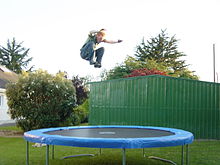by Lori Ciccarelli-Stotko, MPS
According to the Autism Sourcebook by Karen Siff Exkorn, “stimming” or self stimulatory behavior is a repetitive behavior that releases opiate-like substances in the brain called beta-endorphins which can produce either a euphoric or anesthetic effect. Stimming can create a feeling of tranquility for those who are feeling over-stimulated.
Typical Stimming Behaviors Include:
- hand flapping;
- spinning;
- rocking back and forth or side-to-side;
- jumping;
- pacing;
- lining up objects;
- repeating portions of videos, books, or songs at inappropriate times; or
- tapping ears.
Is Stimming Bad?
Like everything, there is an appropriate time and place. Stimming serves a purpose. It helps to calm the nervous system and aids in concentration or focus. I believe we all stim to some degree. In meetings at work, I look around the conference room and see peers clicking pens, shaking a foot or leg, or tapping on the table. I am guilty. I tend to rub my thumb nail when I am reading or concentrating on a lecture. Like anything, if it becomes unsafe or causes harm to anyone then it is not okay. Or, if stimming is causing the person to be overly inflexible or it interferes with everyday life, then it is not healthy.
Substitute Inappropriate Stimming
The Michelle Garcia Winner’s Social Thinking clinic recommended that my son have a “fidget” in his pocket. Examples of fidget are a squishy ball or rocks to rub. The rule was that he couldn’t bring it out of his pocket during class for others to see. This helped calm his nervous system allowing him to concentrate.
When my son with autism spectrum disorder was a small child, we placed a disc swing in the yard hanging from a tree. He would self-regulate by spinning on the swing, then go play, spin, play, etc. It helped him focus. Now as an adult, he controls his stimming by jumping on a trampoline or paces at appropriate times.
I believe in creating a proactive plan to help prevent meltdowns. A powerful tool is the Incredible 5-point Scale written by Kari Dunn Buron and Mitzi Curtis. Put a plan in place so your child can self regulate. Maybe an option is that when she feels like stimming, she can go to a private place. Help children learn to stim in appropriate ways to get them to the place of tranquility. We are all successful when we know our tools and resources specific to our needs to help us succeed.
